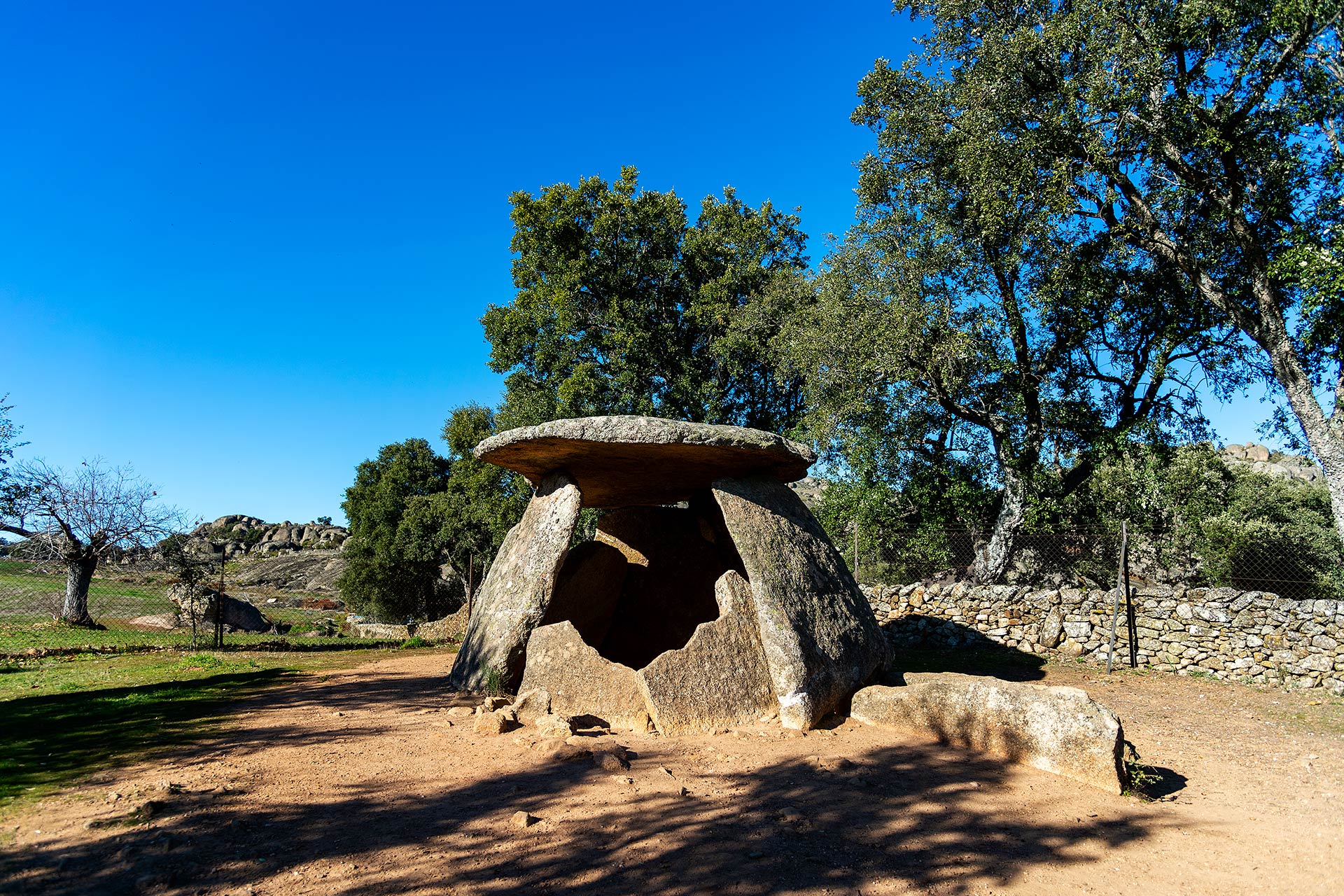Discover the dolmens of Valencia de Alcántara, which are some of the best preserved in Europe. Marvel at these majestic funerary monuments built out of large hand-carved stones, which were dragged one at a time to the place where loved ones were buried.
Whether you visit on foot or by bicycle, alone or with others, and whatever your age, you can discover all of the stories and secrets hidden in these treasures, learn about life thousands of years ago and take in the beauty and immensity of these dolmens out in the open air.
And if you would like to have an even more unusual experience, you can observe the spectacular starry sky next to these jewels and try out “archaeoastronomy”, a unique stellar combination.
The dolmen complex in Valencia de Alcántara has a great deal of cultural and territorial relevance due to its proximity to Portugal and the fact that it is the European Centre of Megalithism. That is why in 1992 it was declared an ACI (Asset of Cultural Interest) within the category of Archaeological Zones.
The term dolmen comes from the Breton language and means “stone table”. They are made up of several slabs (called orthostates) which are placed in a vertical position anchored in the ground, on top of which a slab is placed horizontally, forming the chamber. They were covered with earth, forming what are called “tumuli” (artificial hills). These are funerary monuments (generally collective), dating from around the fourth and third millennia BC.
Inside the chamber, the deceased were buried together with the articles that were intended to accompany them in their afterlife. Generally, the material used for their construction depended on the place where the megalith was built, with granite and slate being the most common. Most of the articles found were carved items (arrowheads, blades and scrapers), polished items (axes and grinders), decorative items (necklace beads and pendants), ceramics or anthropomorphic idols.
From the same prehistoric period, it is also possible to find Cave Paintings that are mainly located in quartzite rocks that are found in shallow caves known as “shelters”, such as the “Puerto Roque” shelter which contains rock art that is a part of the European Network of Paths of Prehistoric Rock Art.









